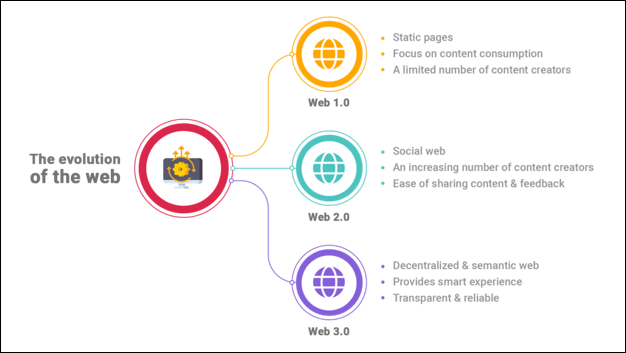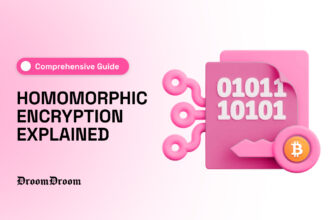Social Media is the lifeline of today’s generation. Creators are making money from social media as much as consuming it. There are about 5.6 billion social media users in 2024 and the creator economy is expected to generate $22.8 billion worldwide in 2024.
However, creators face the problem of lack of data ownership and autonomy. Companies like Facebook and Instagram own the users’ data creating privacy issues. This is where SocialFi stepped in years ago promising Privacy and Security in SocialFi revolution.
Right now, applications like the SuperDapp built on top of Syscoin the Layer-zero Bitcoin chain bring along a robust set of privacy and security measures such as self-custody asset management to SocialFi. These measures give users full ownership of their assets and reduce any counter-party risks
The whole concept of SocialFi is about integrating social media applications with the decentralized network. SocialFi prioritizes user ownership of their content, ensures monetary benefits to creators and enables direct interactions with your favorite musicians, artists, celebrities, etc. Combining these elements SocialFi creates a decentralized and user-centric environment for the Web3 world.
As we approach a higher point in the adoption curve of SocialFi along come some challenges of privacy and security in SocialFi. In this article, we will understand those challenges and how applications like SuperDapp tackle them and build more and more trust in the Web3 world.
How Does SocialFi Work?
SocialFi disrupted the traditional structure of Web2 social media platforms like Facebook, Instagram, X (formerly Twitter), etc. It achieves this by enabling users’ control over their interactions rather than algorithms controlling them and enabling them to earn income based on the value of content they share on the platform.
SocialFi is a decentralized social media platform that combines elements of decentralized finance (DeFi) and social networking. It operates on a model similar to Patreon’s Web2, where content creators such as artists, musicians, and writers connect directly with their audience.
Furthermore, users on SocialFi platforms have multiple earning opportunities based on their engagement and following. There are no restrictions on what can be monetized, so users have the freedom to earn from various sources.
DAOs & their Role in Privacy and Security in SocialFi
Decentralized Autonomous Organizations (DAOs) play quite an important role in managing the privacy and security of SocialFi platforms. The DAOs are responsible for the governance of the platform and for ensuring that there is no central authority controlling user activity on the networks.
These act as regulatory bodies and also prevent developers and other teams from modifying the platforms’ code. This means that every decision such as sharing incentive is will go through a vote on the DAO.
The platforms’ monetization depends on social DeFi tokens which are either native tokens or other traded assets on the platform. In addition to in-app tokens, content creators can develop their own tokens which they can use to monetize their social interactions with their fans.
Since the platforms are decentralized, users can choose which creators to engage with and must hold a creator’s token to engage. These tokens make it possible to incentivize engagement with creators and reward affiliate programs.
Additionally, when we talk about digital ownership, it means that creators can use PFP NFTs to prove their identity and track digital content ownership through other NFTs. This model makes it easier for creators to monetize anything they post, including messages, GIFs, blogs, photos and music. Creators can earn more revenue through advertising, which is fairly distributed on SocialFi networks.
All good till now right?, Here comes a spoiler and to warn you, it’s not a good one. Each coin has two sides and vulnerability is the other side of blockchain technology.
The blockchain network extensively uses smart contracts. For pre-defined execution of money transfers or token transfers based on the number of likes a creator gets, there have to be some rules embedded in the technology. These rules are a set of smart contracts themselves and the problem is that these are vulnerable to security breaches just as much as the DeFi sector is separately.
The threats of cyber attacks create a vulnerability in upholding the platform’s integrity and safeguarding users’ assets. Let’s understand these challenges and how Dapps like SuperDapp solve this challenge.
Privacy and Security in SocialFi

Privacy in Web3 is often discussed in terms of data sovereignty, where individuals have ownership of their personal information and decide who can access it. This creates a shift that could lead to a future where personal data isn’t used for advertising purposes. In Web3 users can participate in online ecosystems without exposing unnecessary information.
However, achieving privacy and security in SocialFi Web3 is a complex challenge. While blockchain technology provides transparency and security through immutability, it also poses many privacy risks because public blockchains by design are visible to all. This means that even pseudonymous transactions can be tracked and analyzed for patterns and other data points.
In order to reduce these challenges, Web3 projects are exploring a range of privacy-enhancing techniques, like zero-knowledge proofs and confidential transactions which allow for verification of data without revealing sensitive details.
How SuperDapp Preserves and Protects Privacy?
In the Web3 world digital security and privacy and security in SocialFi world are more crucial than ever and Syscoin blockchain-based SuperDapp offers a solution that redefines how we interact with our digital assets. Built on the innovative Rollux technology, Super Dapp’s self-custody wallet is designed to provide users with complete control over their cryptocurrencies and digital assets.
This approach ensures that your data remains yours—secure, private and free from centralized control.
Some of the other ways in which SuperDapp preserves the privacy of its users are –
Layer-Zero Bitcoin chain
SuperDapp secures itself through the power of Syscoin, the Layer-Zero Bitcoin chain. Syscoin inherits Bitcoin’s robust Proof-of-Work consensus mechanism making it extremely difficult to tamper with SuperDapp’s data.
Transactions on both chains are immutable, further guaranteeing the integrity of information stored on SuperDapp. Syscoin adds another layer of security. Breaching SuperDapp would require compromising the security level of the Bitcoin blockchain, a near-impossible feat.
Your Keys, Your Control
Yes, you heard it right!
Even to this date, there are some crypto platforms in the SocialFi space that control your private keys. However, SuperDapp’s self-custody wallet lets you manage your keys without relying on anyone else. This makes you the custodian of your digital assets handing you the power to buy, sell and transfer your funds.
Multi-Signature
SuperDapp goes beyond basic security measures such as encryption and self-custody of assets. It offers advanced features that are both secure and easy to use. The multi-signature functionality lets you add extra security by requiring multiple approvals for certain actions.
“Its user-friendly interface makes it easy to manage your crypto even if you’re not a tech expert. This balance between security and ease of use is what makes SuperDapp stand out”
Jagdeep Sidhu, CEO of SYS Labs
Strict Non-Disclosure Policy
SuperDapp has a zero-disclosure policy. They will not share user data with anyone unless required by a court order.
Advanced Encryption & Secure Connections
Adding to the list of security features, the platform employs multiple encryption algorithms like AES 256, RSA and Elliptic Curve to protect user data and has multiple SSL/TLS protocols in place to create secure connections.
Multi-factor authentication & Zero-Knowledge Proofs
SuperDapp uses blockchain technology and Zero-knowledge proofs to encrypt user data and all their communications. SuperDapp offers an optional multi-factor authentication (MFA) as an extra layer of security.
The platform’s commitment to bringing privacy and security in SocialFi is further demonstrated through its collaboration with Fort Knoxer which is a leading crypto security company. Through this partnership, Syscoin ensures that the latest security protocols and privacy-enhancing technologies are integrated into the platform offering you users the peace of mind to have a safe and private conversation with your loved ones.
Conclusion
Privacy and security in SocialFi is essential because of the inherent nature of blockchains. Blockchains are designed to be public and transparent, which means anyone from the world can view the entire history of transactions executed on a particular chain. However, this has become problematic to the web3 world as there is some personal and sensitive information stored on the blockchain when it comes to SocialFi.
This dilemma of the “Blockchain Privacy Paradox” is being solved by modern-age applications like SuperDapp. SuperDapp, based on Rollux addresses this issue with an end-to-end encrypted suite of communication. Additionally, it provides a layer of security along with the use Zero- Knowledge proofs and MFAs.
The hope for privacy and security in SocialFi space is filled with optimism in the year 2024 with such applications and with the creator economy booming, blockchain technology is at the very right place to on-board the latest generation of users with its new-to-age benefits.




















